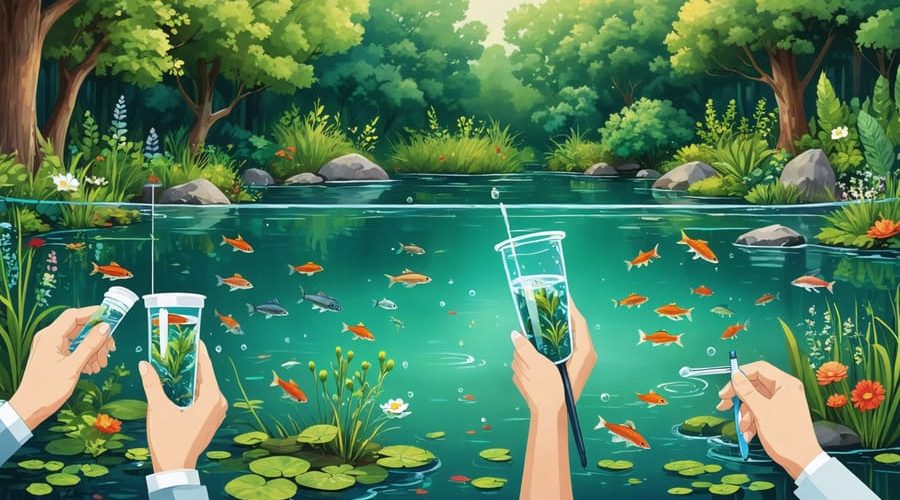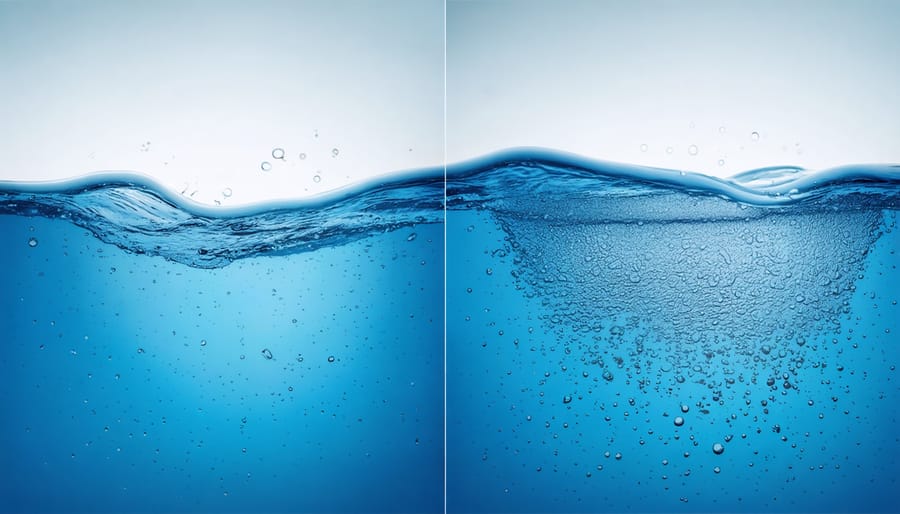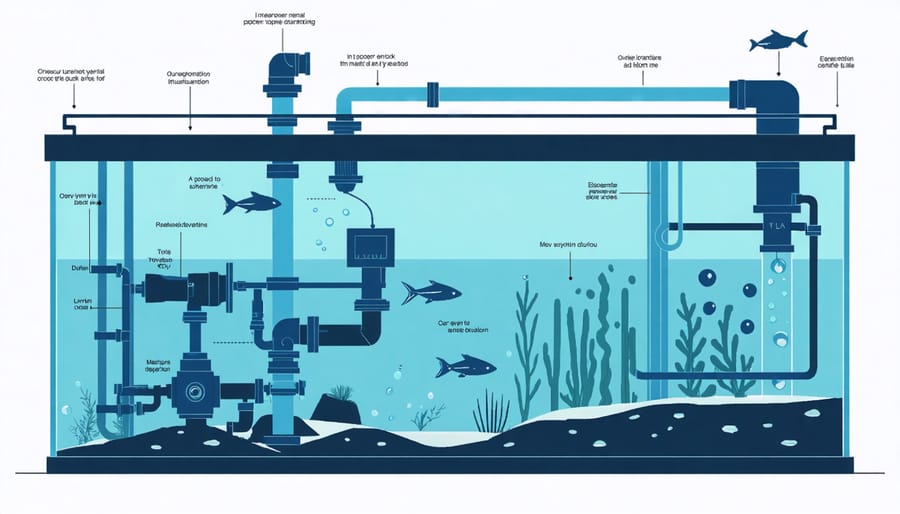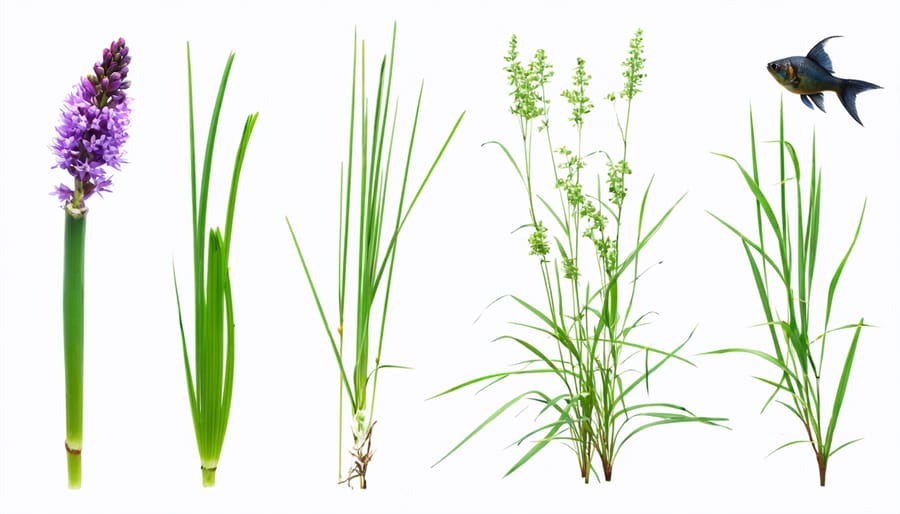
Protect Your Pond: Stop Invasive Species Before They Strike
Protecting our waterways from invasive species demands immediate, decisive action to preserve native ecosystems and maintain ecological balance. From aggressive aquatic plants that choke out local species to destructive animals that disrupt food chains, invasive species pose a serious threat to our ponds, lakes, and rivers. Yet with proper vigilance and preventive measures, pond owners and water managers can effectively safeguard their aquatic environments from these unwanted intruders. Whether you’re maintaining a backyard pond or overseeing a larger water feature, implementing the right prevention strategies can save countless hours and resources while protecting our precious water ecosystems for future generations. Join us as we explore five proven, practical methods to keep invasive species at bay and maintain healthy, thriving aquatic environments that support native flora and fauna.
Screen Your Water Sources
Water Testing Methods
Testing your pond water before adding new plants or fish is crucial for preventing invasive species. Start by using a water testing kit to check the pH, ammonia, and nitrate levels, as these can indicate the presence of harmful organisms. A simple visual inspection can help spot floating fragments or tiny creatures, so pour a sample into a clear container and examine it against a light background.
For more thorough screening, filter water through a fine mesh net – this can catch microscopic organisms and plant fragments. Let collected water samples sit for 24-48 hours and observe any changes or movement. If you notice unusual growth or swimming creatures, avoid using that water source.
Consider using quarantine tanks for new additions to your pond. This isolation period allows you to monitor for potential invasives before introducing them to your main water feature. Remember, even seemingly clean water can harbor unwanted visitors, so regular testing and screening should become part of your pond maintenance routine.

Safe Water Sources
When adding water to your pond or water feature, it’s crucial to use water from reliable sources to prevent unwanted hitchhikers. Municipal tap water is generally the safest choice, as it’s treated to eliminate harmful organisms. If you’re using well water, regular testing can help ensure it’s free from potential invasive species.
Avoid collecting water from natural water bodies like lakes, streams, or other ponds, as these can harbor invasive plants, animals, and microorganisms. Even small amounts of water from these sources can introduce problematic species into your controlled environment.
If you must use water from natural sources, consider treating it first. UV sterilization, proper filtration, or allowing the water to sit for several days can help reduce risks. For rainwater collection, ensure your storage containers are covered to prevent unwanted organisms from entering.
Remember that even water from seemingly clean sources can contain microscopic invasive species, so vigilance is key in protecting your water feature.
Quarantine New Plants and Fish
Setting Up a Quarantine Tank
Setting up a quarantine tank is like creating a safety checkpoint for new aquatic plants and fish. Start with a separate container that’s at least 20 gallons in size, equipped with a basic filtration system and adequate lighting. Place this tank away from your main pond to prevent any cross-contamination.
Fill the tank with dechlorinated water and maintain a temperature similar to your main pond. Before introducing new plants or fish, carefully inspect them for signs of hitchhiking organisms, eggs, or plant fragments. Remove any suspicious material and rinse the plants gently in clean water.
Keep new additions in quarantine for at least two weeks, though a month is ideal. During this time, monitor the water quality and watch for any signs of disease or unwanted growth. This waiting period allows enough time for potential invasive species to become visible and for you to treat or remove them before they reach your main pond.
Remember to use separate nets and equipment for your quarantine tank to avoid accidentally transferring organisms between systems. After the quarantine period, give plants one final inspection before introducing them to your pond.

Quarantine Duration Guidelines
Proper quarantine periods are essential for preventing invasive species from entering your pond ecosystem. For new aquatic plants, maintain a minimum 2-week quarantine in a separate container, carefully inspecting for hitchhiking snails, eggs, or unwanted plant fragments. Fish require a longer quarantine period of 3-4 weeks to monitor for diseases and parasites that could harm your existing pond inhabitants.
When introducing new substrate or decorative elements, soak them in clean water for at least 48 hours, changing the water daily to flush out any unwanted organisms. For equipment that’s been used in other water bodies, implement a dry quarantine of 5-7 days to ensure any potential invasive species are completely dehydrated.
Remember that these are minimum guidelines – extending quarantine periods is always safer, especially during warmer months when organisms are more active. Keep quarantined items away from your main pond, and use separate tools and equipment to prevent cross-contamination. If you notice any suspicious growth or movement during quarantine, extend the isolation period and consider treating or disposing of the item properly.
Regular Monitoring and Inspection
Signs of Invasion
Being vigilant about spotting invasive species early can save you countless hours and resources later. Watch for sudden changes in your pond’s appearance, such as unusually cloudy water or rapid algae growth. Keep an eye out for unfamiliar plants spreading aggressively or new fish species you didn’t introduce. As you monitor your pond’s biodiversity, look for declining native plant populations or fish showing signs of stress.
Common red flags include floating plant fragments you don’t recognize, unusual water coloration, or decreasing water clarity. Pay attention to your pond’s edges, where new plant growth often starts. If you notice your regular maintenance routines becoming more challenging or water quality tests showing unexpected results, these could be early warning signs of invasive species taking hold.
Remember, the sooner you spot these signs, the easier it will be to address the problem and protect your pond’s ecosystem.
Inspection Schedule
Regular inspections are your first line of defense against invasive species. Create a monthly checklist that includes examining plant growth patterns, looking for unfamiliar species, and monitoring water conditions. During spring and summer, increase these checks to bi-weekly as this is when most invasive species thrive.
Start at the pond’s edge and work your way inward, checking both above and below the water surface. Pay special attention to areas where plants connect or overlap – these spots often harbor hitchhiking species. Document any changes you notice, including new plant growth, unusual colors, or different leaf patterns.
Keep a seasonal calendar marking when your regular plants typically grow, bloom, and die back. This makes it easier to spot anything unusual. Take photos during your inspections to track changes over time. If you notice something concerning, don’t wait – investigate immediately to prevent potential problems from spreading.
Remember to inspect any new additions thoroughly before introducing them to your pond, including plants, fish, and even maintenance equipment.
Choose Native Species

Compatible Fish Species
When selecting fish for your pond, consider these native species that naturally complement your local ecosystem. Fathead minnows make excellent choices, as they help control mosquito larvae while staying manageable in population. Golden shiners are another great option, providing beautiful flashes of color while maintaining ecological balance. For larger ponds, consider bluegills or pumpkinseeds, which naturally control insect populations and provide entertainment with their active behavior.
In cooler regions, brook trout can thrive when properly managed, while warmer areas might benefit from redear sunfish. These species not only add visual interest to your pond but also contribute to a balanced ecosystem. Remember to check with your local extension office before introducing any fish, as recommendations may vary by region. Start with a small number of fish and monitor their adaptation to prevent overpopulation.
Choose fish that match your pond’s size, depth, and water conditions to ensure their success and prevent the need for non-native alternatives.
Beneficial Plants
One of the most effective ways to prevent invasive species is to embrace native aquatic plants in your pond. Local species like water lilies, rushes, and sedges naturally compete with invasive plants while providing essential habitat for local wildlife. These beneficial plants have evolved alongside native fish and insects, creating balanced ecosystems that are more resistant to invasions.
Consider adding marginal plants around your pond’s edges, such as iris and cattails, which help stabilize the shoreline and reduce areas where invasive species might take hold. Floating plants like duckweed can shade the water and limit algae growth while using up nutrients that invasive species would otherwise consume.
Remember to space your plants properly and maintain them regularly. This creates a strong plant community that naturally defends against unwanted species while keeping your pond looking beautiful and healthy year-round.
Maintain Healthy Water Conditions
Maintaining optimal water conditions is your first line of defense against invasive species. Start by regularly testing your pond’s water parameters, including pH, ammonia, nitrites, and phosphates. Aim to keep pH levels between 6.5 and 8.5, as extreme values can stress native species and create opportunities for invasive ones to thrive.
Install a quality filtration system and clean it regularly to remove excess nutrients that invasive species often exploit. Adding beneficial bacteria helps break down organic matter and helps maintain ecological balance in your pond ecosystem.
Consider incorporating water plants that naturally absorb excess nutrients. Water lilies, rushes, and submerged plants not only look beautiful but also compete with potential invasive species for resources. Keep water moving with pumps or fountains to prevent stagnant areas where problematic organisms can multiply.
During seasonal changes, pay extra attention to water quality. Remove fallen leaves promptly in autumn, and thin out plants in spring to prevent overcrowding. If you notice any sudden changes in water clarity or unusual algae growth, act quickly to identify and address the cause.
Remember to avoid using chemical treatments unless absolutely necessary, as these can disrupt the natural balance and potentially create conditions that favor invasive species.
Protecting our waterways from invasive species requires ongoing dedication and vigilance, but the effort is well worth it. By following these five prevention strategies – carefully selecting plants, maintaining proper quarantine procedures, regular monitoring, responsible disposal practices, and educating fellow pond enthusiasts – you can help keep your water garden healthy and beautiful. Remember that prevention is always easier than dealing with an established invasion, so make these practices part of your regular pond maintenance routine. Stay informed about new invasive threats in your area, connect with local gardening communities, and don’t hesitate to reach out to experts if you spot something unusual. Together, we can preserve the natural balance of our water gardens while creating stunning aquatic spaces that bring joy for years to come.
